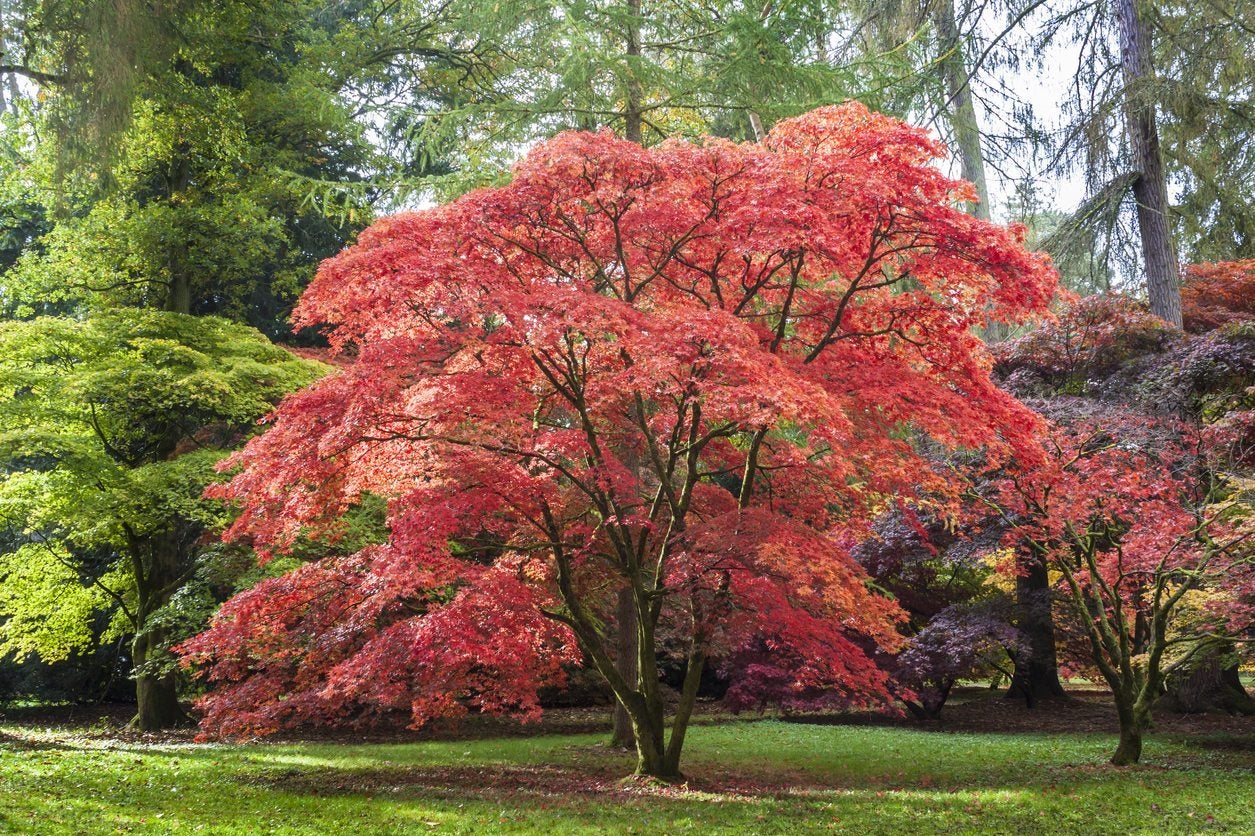Hot Weather Japanese Maples: Learn About Zone 9 Japanese Maple Trees


If you are looking into growing Japanese maples in zone 9, you need to know that you are at the very top of the plants’ temperature range. This can mean that your maples may not flourish as you hope. However, you can find Japanese maples that do just fine in your area. In addition, there are tips and tricks zone 9 gardeners use to help their maples thrive. Read on for information on growing Japanese maples in zone 9.
Growing Japanese Maples in Zone 9
Japanese maples tend to do better at being cold hardy than heat tolerant. Excess warm weather can injure the trees in several ways. First, Japanese maple for zone 9 may not get an adequate period of dormancy. Also, hot sun and dry winds can injure the plants. You’ll want to select hot weather Japanese maples to give them the best chance in a zone 9 location. In addition, you can select planting sites that favor the trees. Be sure to plant your Japanese maple in a shady location if you live in zone 9. See if you can find a spot on the north or east side of the house to keep the tree out of the scorching afternoon sunshine. Another tip for helping zone 9 Japanese maples thrive involves mulch. Spread a layer of 4 inches (10 cm.) of organic mulch over the entire root zone. This helps regulate the temperature of the soil.
Types of Japanese Maples for Zone 9
Some species of Japanese maple work better than others in warm zone 9 areas. You’ll want to pick one of these for your zone 9 Japanese maple. Here are a few “hot weather Japanese maples” that are worth a try: If you want a palmate maple, consider ‘Glowing Embers,” a beautiful tree that reaches 30 feet (9 m.) tall when grown in the landscape. It offers exceptional fall color too. If you like the delicate look of lace-leaf maples, ‘Seiryu’ is a cultivar to look at. This zone 9 Japanese maple gets to 15 feet (5 m.) tall in your garden, with golden fall color. For dwarf hot weather Japanese maples, ‘Kamagata’ only rises to 6 feet (2 m.) high. Or try ‘Beni Maiko’ for a slightly taller plant.
Gardening tips, videos, info and more delivered right to your inbox!
Sign up for the Gardening Know How newsletter today and receive a free copy of our e-book "How to Grow Delicious Tomatoes".

Teo Spengler is a master gardener and a docent at the San Francisco Botanical Garden, where she hosts public tours. She has studied horticulture and written about nature, trees, plants, and gardening for more than two decades. Her extended family includes some 30 houseplants and hundreds of outdoor plants, including 250 trees, which are her main passion. Spengler currently splits her life between San Francisco and the French Basque Country, though she was raised in Alaska, giving her experience of gardening in a range of climates.